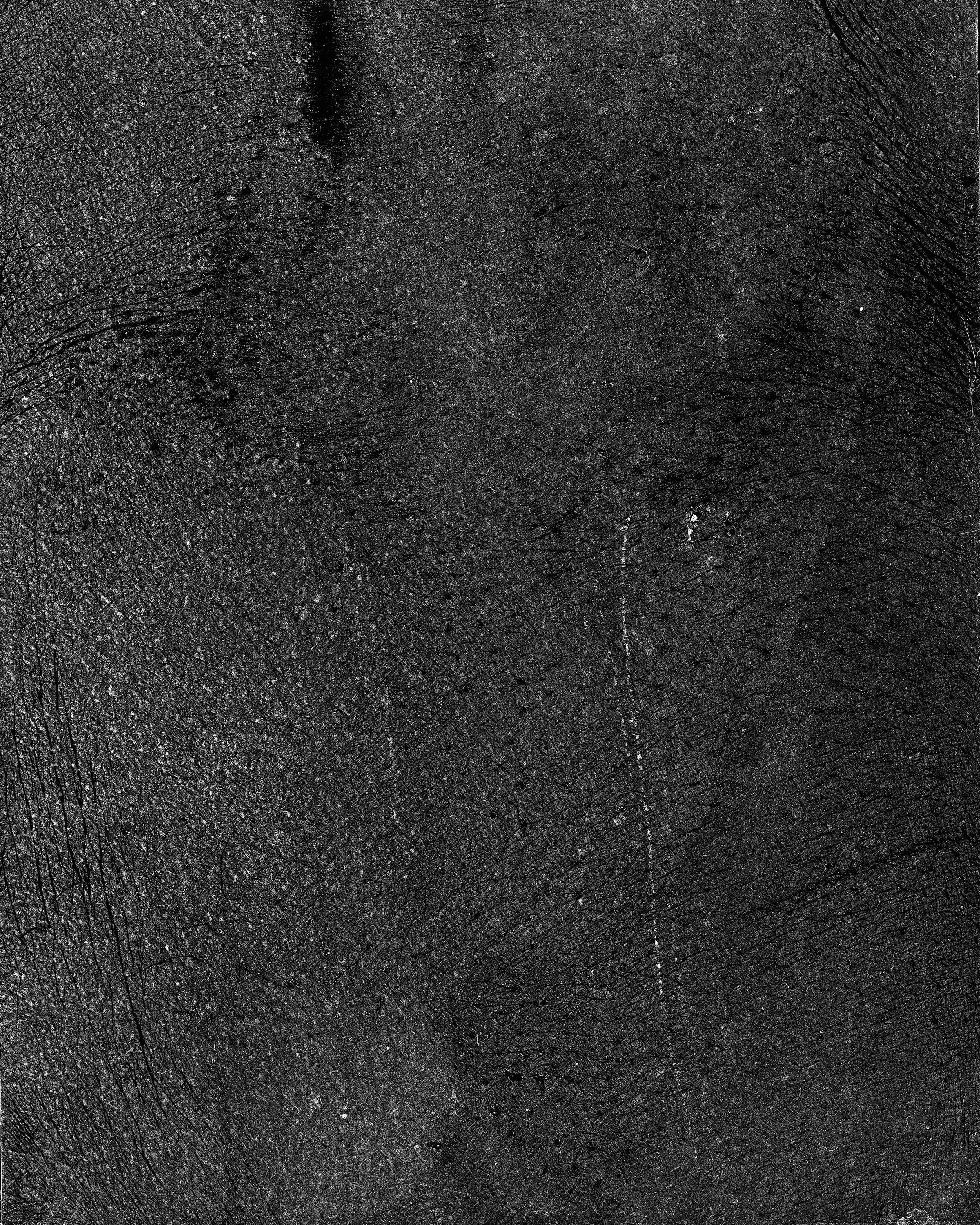UT Planet Texas (2021) Gallery
The Planet Texas 2050 Stories of Ancient Resilience Flagship team at the University of Texas at Austin and I are collaborating together to imagine ways we can use creativity to build community and document aspects of resiliency. Updates coming fall/winter 2021.
The following shows an online interview with each of the SOAR Flagship team members.
[The following section is a collection of black and white skin prints featuring unique patterns that consist of tiny white bumps, black streaks, and scars all produced by the skin.]
Adam Rabinowitz, Skin Print #83
Adam Rabinowitz
RS: How do you define and or understand resilience?
AR: I understand resilience -- if it's the right term to use -- as the ability of an individual, a group, or a system to preserve the elements of its identity that it considers to be core to that identity, even in the face of major challenges to bodily, psychological, communal, or systemic integrity. I see this quality as one that allows for change, even major change, while preserving a nucleus of self that allows the individual, group, etc. to recognize and value itself as itself even after an irrevocable transformation.
RS: Where on your body did you choose to create your prints from? Why were these spots important to you?
AR: I chose to create prints from my left elbow, where I have a scar from a bicycle accident I had when I was 13, goofing around, and turned the wheel too hard; from the heel of my left hand, which I broke in the bike accident I had in Austin and where I had surgery to pin bones back into place.
Paola Passalacqua
RS: How do you define and or understand resilience?
PP: As a scientist who works in resilience, my definition is mainly scientific, as the ability of a system to withstand and recover from shocks without losing its ability of functioning. that can be applied to people as well.
Paola Passalacqua, Skin Print #98
Jonathan Lowell
Jonathan Lowell, Skin Print #364
Fernanda Leite, Skin Print #96
Fernanda Leite
RS: How do you define and or understand resilience?
FL: Resilience is often defined as bouncing back from a shock. However, the pandemic made me reflect on some aspect of our lives that I don't wish to bounce back to - so in this case, resilience is bouncing forward.
RS: Where on your body did you choose to create your prints from? Why were these spots important to you?
Knee with scar (reminds me of childhood adventures)
David Kramer
RS: How do you define and or understand resilience?
DK: I consider myself an athlete who is well trained in adapting to stress and purposefully induces stress to grow. I also consider myself an outsider in most social circles and cultures and find that I often question myself and who I am and go through a lot of wandering and soul searching periods that lead, typically, to strength and calm, but they can be very stormy and dark at times.
David Kramer, Skin Print #90
Sheryl Luzzadder-Beach, Skin Print #96
Sheryl Luzzadder-Beach
RS: How do you define and or understand resilience?
SLB: Resilience is the ability to recover in a positive direction from adversity or perturbation in a system, but the comeback may be in a different form.
RS: Where on your body did you choose to create your prints from? Why were these spots important to you?
I chose to make the small prints on my left (#95) and right (#96) forearms, because there are mini-scars from my cats from playing with them, from holding them, and their kneading with paws and claws. Two of my cats died of fast moving cancers during the pandemic, so the scars are their goodbyes to me. Also my right arm/wrist had the nerve problem from teaching and writing online. I chose to do a print of my left calf (#97) because I tore it playing tennis with my husband back in about 1997 (running backward to hit a shot). I could not walk and he carried me off of the court to go for medical help. It is a resilience story because I was able to "come back" from that after physical therapy, my calf muscle is misshapen as a reminder that resilience is not perfect, but I can run and hike with my husband again, enjoying the joy of our outdoor sports and field research.
Dan Breeker
RS: How do you define and or understand resilience?
DB: The tendency to adapt to and/or recover from change
Dan Breeker, Skin Print #88
Katherine Lieberkneacht, Skin Print #94
Katherine Lieberkneacht
RS: How do you define and or understand resilience?
KL: I define resilience from an ecological perspective-- the ability of a natural system or organism to return to stability after a disturbance. I have moved away from using "resilience" as a term in most of my social science work, since I agree with much of the critique that the term supports neoliberal beliefs that people should be resilient in the face of catastrophe (which puts a lot of pressure on individuals to have "grit" and "pull themselves up by their bootstraps" and doesn't acknowledge the systemic causes of the climate crisis, economic crisis, infrastructure failures, etc.).
RS: How does your experience of resiliency and touch relate to your connection with Austin, TX?
KL: I like the light breezes that we get from the coast and travel up to Austin -- I remember after my husband died, and I was missing his touch, I became much more aware of touch that comes from nature (a breeze, or the slight change in air pressure that you can feel when a bird flies over you).







